Sally Smart interview: Staging the Studio
In Staging the Studio, Sally Smart brings together artworks and ideas that form an incredibly perfect circle. Here, she explains.
By Paul Dalgarno
Sally Smart follows a script, and it’s a doorstopper – two-inches thick, it teems with untethered pages scanned from books, sketches, doodles, quotes from Martha Graham on choreography, from Rudolf Laban on dance theory, pedagogical drawings by Rudolph Steiner, art by Hannah Höch, black-and-white photos of the avant-garde dance company Ballets Russes from the early 20th century, costume designs, handwritten notes, more sketches: materials she’s been collating since 2012 or earlier that continue to inform her work, an ever-expanding source for constructing the texts in her blackboard works.
She lays it down on a table in her North Melbourne studio, shows me the scale model she’s made of the Margaret Lawrence Gallery, where she will shortly launch a solo exhibition, Staging the Studio (The Choreography of Cutting). One of the miniaturised walls has been given over to a blackboard work of the sort she’s been making since The Pedagogical Puppet series in 2012; another is given over to a large-scale collage of the sort she creates under the rubric The Choreography of Cutting, projects started elsewhere and shown in different iterations around the world. All going to plan, they'll feed into a new work next year involving live dance, shadow plays and video.
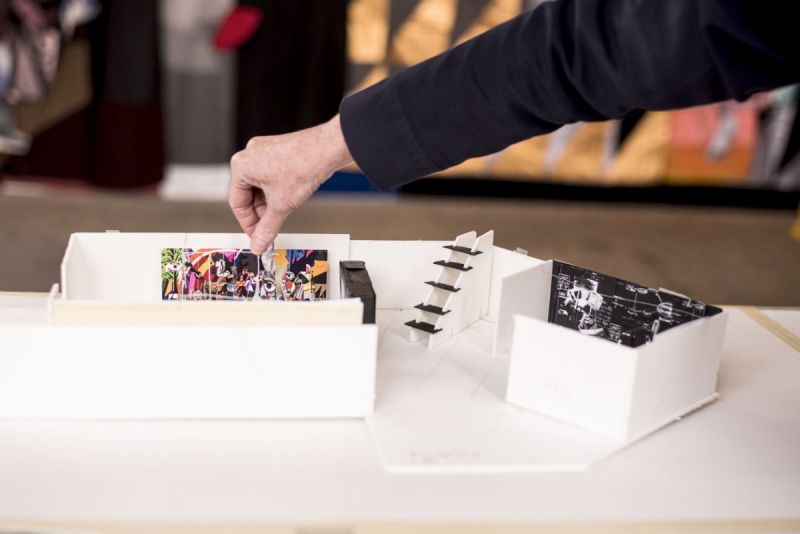
“I tend to make art in series although it is quite fluid,” she says. “One piece bleeds into the next then leads on to something else. It’s a bit like creating a whole world, I guess. This new assemblage work is still playing itself out."
The scale model pales against the full-sized versions of the works-in-progress spanning the studio walls, floor to ceiling. A stepladder waits patiently for Smart to climb up and pin another element to the collage; a purple and red rainbow arches in from the left; a tree with golden foliage reflects the light; feet dangle; branches sway; eyes peer.
By contrast, the blackboard wall looks … well, black: grainy cut-outs of two different dancers’ legs – photographed a decade apart – are pinned in the same pose; quotes taken from the script are chalked up in cursive – by Gertrude Stein: “In being dancing she was dancing …”; by Pina Bausch: “I’m not interested in how people move, but in what moves them.”
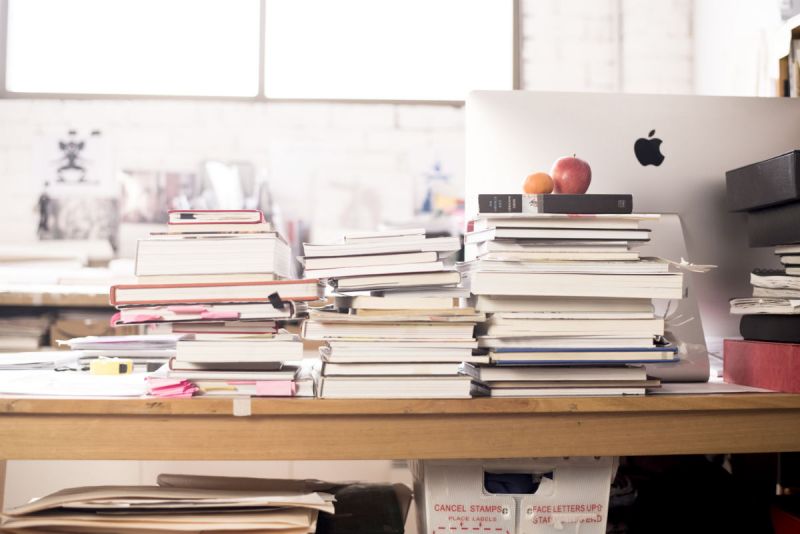
Ten days out from the show the works will be transported to the gallery, where Smart will continue to work on them, adding, subtracting, rearranging. The spread of ideas in the work is such that it’s hard to know where to begin – so maybe with the Ballet Russes’ costumes and stage designs.
The rainbow – its shape and form – was inspired by a Ballets Russes backdrop, as were the trees; the same goes for the elaborately reworked dancer’s costume near the centre of the collage and a suspiciously Cubist-looking horse.
The company's work from 1909 to 1923 is of particular interest to Smart for the unprecedented collaboration it fostered between up-and-coming composers (such as Claude Debussy) and choreographers (such as Vaslav Nijinsky); but she is particularly drawn to the work done for the Ballet by avant-garde artists such as Henri Matisse, Pablo Picasso, Sonia Delaunay, Natalia Goncharova and Mikhail Larionov.

Costumes designed by those artists and others are currently held in the National Gallery of Australia collection. “James Mollison, the gallery’s inaugural director, famously acquired many of the Ballets Russes costumes in the 1970s, from an auction in London," she says. "I believe they arrived in huge baskets, then the NGA then set about researching and restoring them. And of course now they’re cherished and studied as very important as artefacts of performance.”
Smart re-opens her script to show me costume designs by Larionov for the Ballet Russes dance work Chout (1921) – they look part Russian folk art, part court jester, made from heavy felt, padding and cane.
“Larionov had created an incredible synthesis where he was able to make the backdrops and costumes appear as one enormous assemblage for Chout, like a moving image,” says Smart. “The costumes are extraordinary and very sculptural, but I was also interested in the story that the dancers threatened to strike – they had difficulty actually dancing in these costumes, they put a lot of strain on the body. They were difficult to manoeuvre – your feet could be cut, your whole body ...”
In 2011 or thereabouts, Smart began working with imagery from the Ballets Russes, digitally cutting and reinterpreting the photographs of costumes on her computer, to create digital collages. She initially sent the images to artisans in Vietnam, and later to her assistant in Yogyakarta, Indonesia, who would work with artisans to bring them to life with stitching and embroidery before sending them back to Smart: an interpretation of an interpretation of an interpretation, with elements lost and gained in the process.

Cutting has been a constant for Smart, a seemingly small act with broader social ramifications. “I call it the politics of cutting,” she says, “the capacity to change something by cutting". The same goes for words, writing them up on blackboards to create mind-maps that give tantalising glimpses into her thinking, the way everything connects, or might connect, or might not.
Yes, she has a script, but in the best tradition of Surrealism, its pieces fall in different configurations, with different emphases, rubbing against each other to produce surprising juxtapositions – ideas that function as dancers, with Smart as the choreographer.
“I remember asking myself the question: ‘What do choreographers do to image movement?’” she says. “I was introduced to amazing Rudolf Laban drawings based on his ideas about movement and dance at the National Resource centre of Dance at the University of Surrey in Guilford in the UK. I realised that in many ways those drawings imagining movement were similar to how I might describe an action or process.
“I move the elements I work with in a choreography of parts. Those manoeuvres are then generally pinned to the gallery wall, a process to find the ‘right’ placement, whether that means a conceptual or formal conclusion. The body, my body, is part of that action both physically and psychologically."
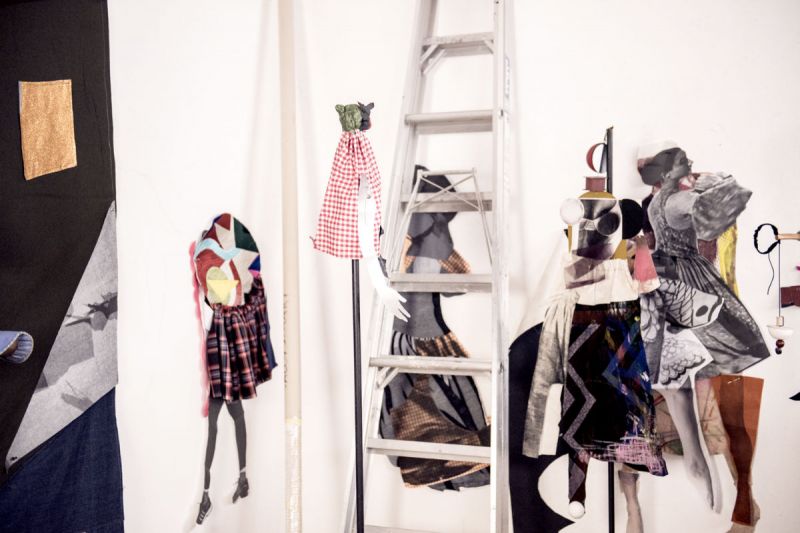
Smart’s blackboard work began in 2012 during a residency at the University of Connecticut (“I didn’t realise at first that it spells out Connect-I-Cut, which was perfect for me”). She’d been asked to work with practitioners in animation and puppetry, but soon drafted in choreographers and voice artists too.
“There were different schools and disciplines but I was interested to work in a multi-disciplinary way and I managed to achieve this synthesis. It was a great experience, but also a really a great opportunity for me to explore new media for my practice.”
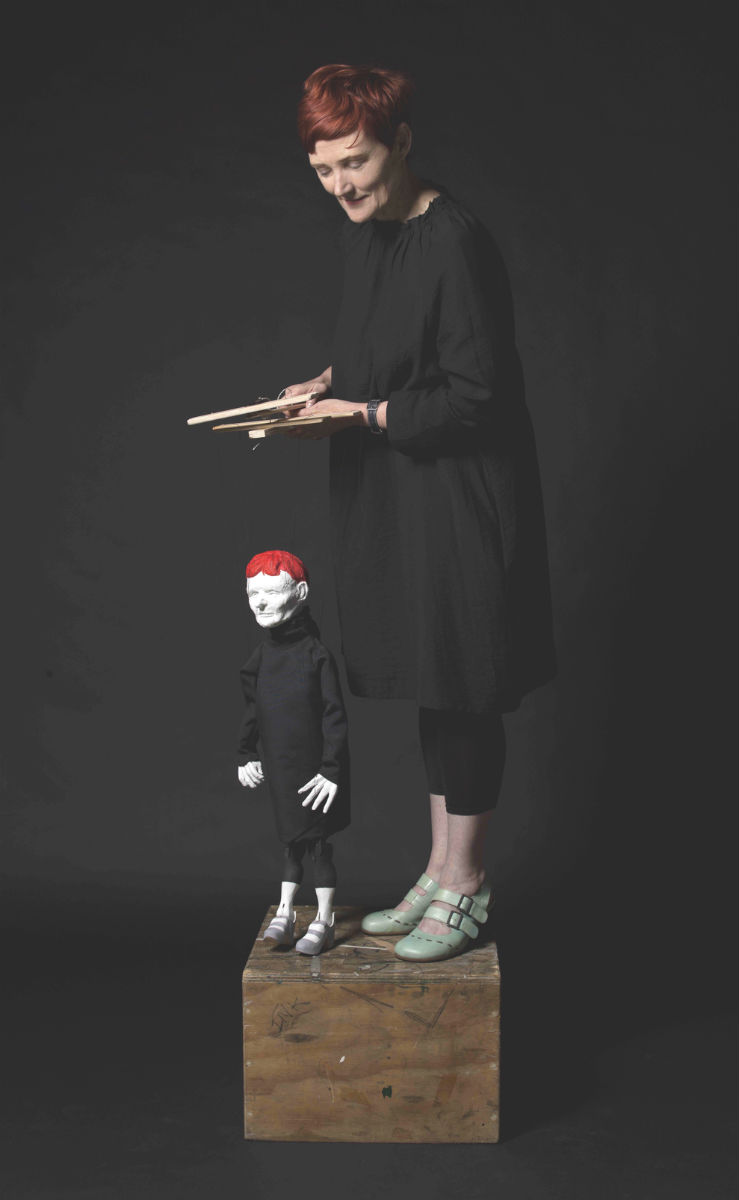
Many of the art rooms contained blackboards, which suited the title of Smart’s project, which had already been decided, The Pedagogical Puppet. She asked to have one of the walls in the Art School’s Contemporary Art Galleries painted black, creating a giant blackboard, and used the gallery space as her studio.
“For eight weeks, I made notes on the blackboard wall, pinned drawings up, and used the gallery as a stage space for time-based media works. Since then, I've re-staged the blackboard as a process artwork, in many gallery spaces, including in London, New York, Jakarta, and now Melbourne.”
Smart visits Indonesia several times a year. Her connection to the country stretches back to 2005, when she was invited to exhibit her The Exquisite Pirate work at the Jogja Biennale. She couldn’t attend but sent her work over in boxes with written and visual instructions on how to reassemble it – at which point the Indonesian artist Entang Wiharso, who also works with cut-outs, became acquainted with her work.
They met in Melbourne in 2012 and realised a full-scale joint exhibition, Conversation: Endless Acts in Human History, at the Galeri Nasional in Jakarta last year. “It was an act of trust and friendship,” says Smart. “A conversation between two artists to create an exhibition that spoke beyond us.”
In true Smart style the exhibition was a staging post, not a final destination.
As a Vice Chancellor’s Fellow at the University of Melbourne, she continues to work with Wiharso on the Conversation project, while further developing her own links and practice in Indonesia.
“Entang and I have lots of incredible synergies,” she says. “Not just with our work but as artists in the world right now.”
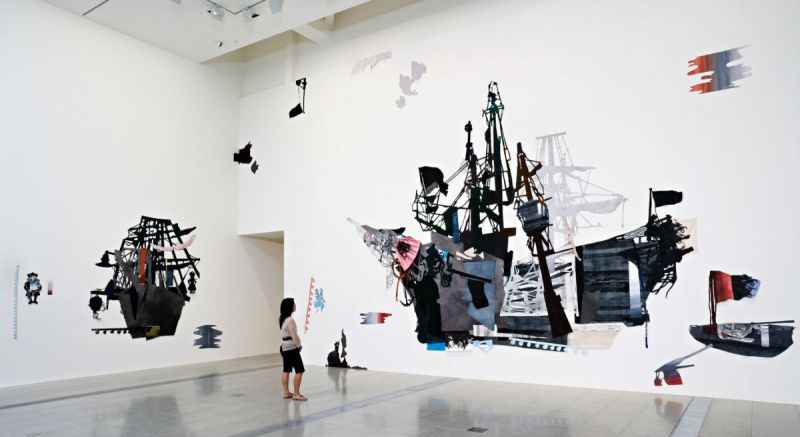
Where Smart finds herself in the world changes regularly. Her Melbourne studio is her base but the works – like her – often travel the globe. As a result she’s something of a guru at avoiding jetlag (“before the plane takes off, set your watch to the time where you’re going”) and has an appreciation of the varying contexts in which her work appears. “It’s been really great for my practice to travel, whether it’s showing in a museum or small gallery space. They're all different places with different meanings.”
One context in which she's excited to see her work is on a new range of clothing and accessories by the luxury Italian fashion house Marni, as part of the company's art collaboration series.
“Marni has an incredible relationship to art, design and architecture,” says Smart. “It’s been an uncanny coincidence because the collaboration has coincided with my new works cutting up the Ballets Russes costumes. So there I am, cutting up and reimagining the Ballets Russes while giving Marni the rights to cut up and interpret my work.”
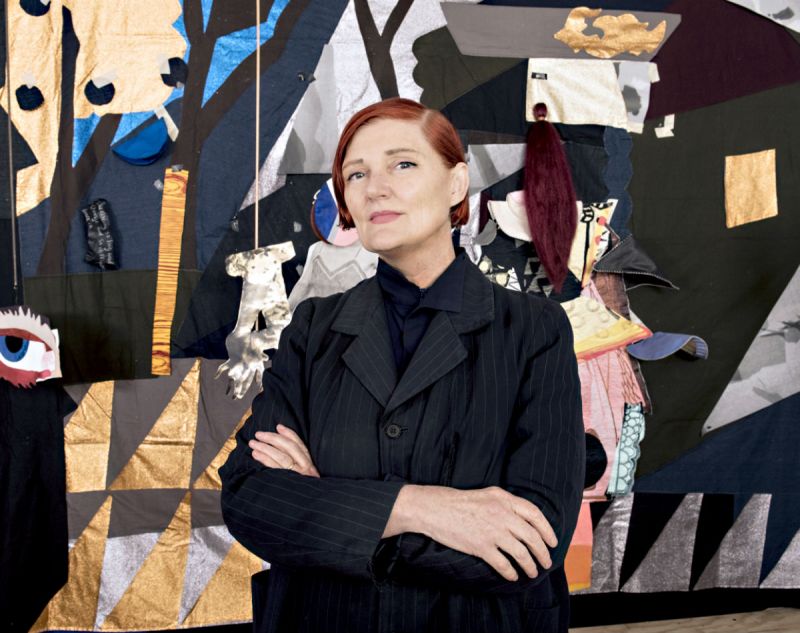
Off the back of the Marni news breaking, Vogue India will run a feature on Smart, in line with other big publishers, creating a new level of cultural capital for Smart’s work. “There’s a momentum that comes from within the art world and the Marni art collaboration is definitely adding to that,” she says. “Even though the relationship between fashion and art was strong in the 20th century, there’s definitely attention around art collaboration with fashion right now.”
In other words, it's all coming together for Smart – a synchronicity that will be evident at her Margaret Lawrence Gallery exhibition. “For me, this exhibition brings together a series of works that form an incredibly perfect cycle.”
Sally Smart: Staging the Studio (The Choreography of Cutting) is at the Margaret Lawrence Gallery, Southbank, Melbourne, from 5 October to 4 November. More details.
Banner image: Sally Smart in her studio. Photo: Giulia McGauran.